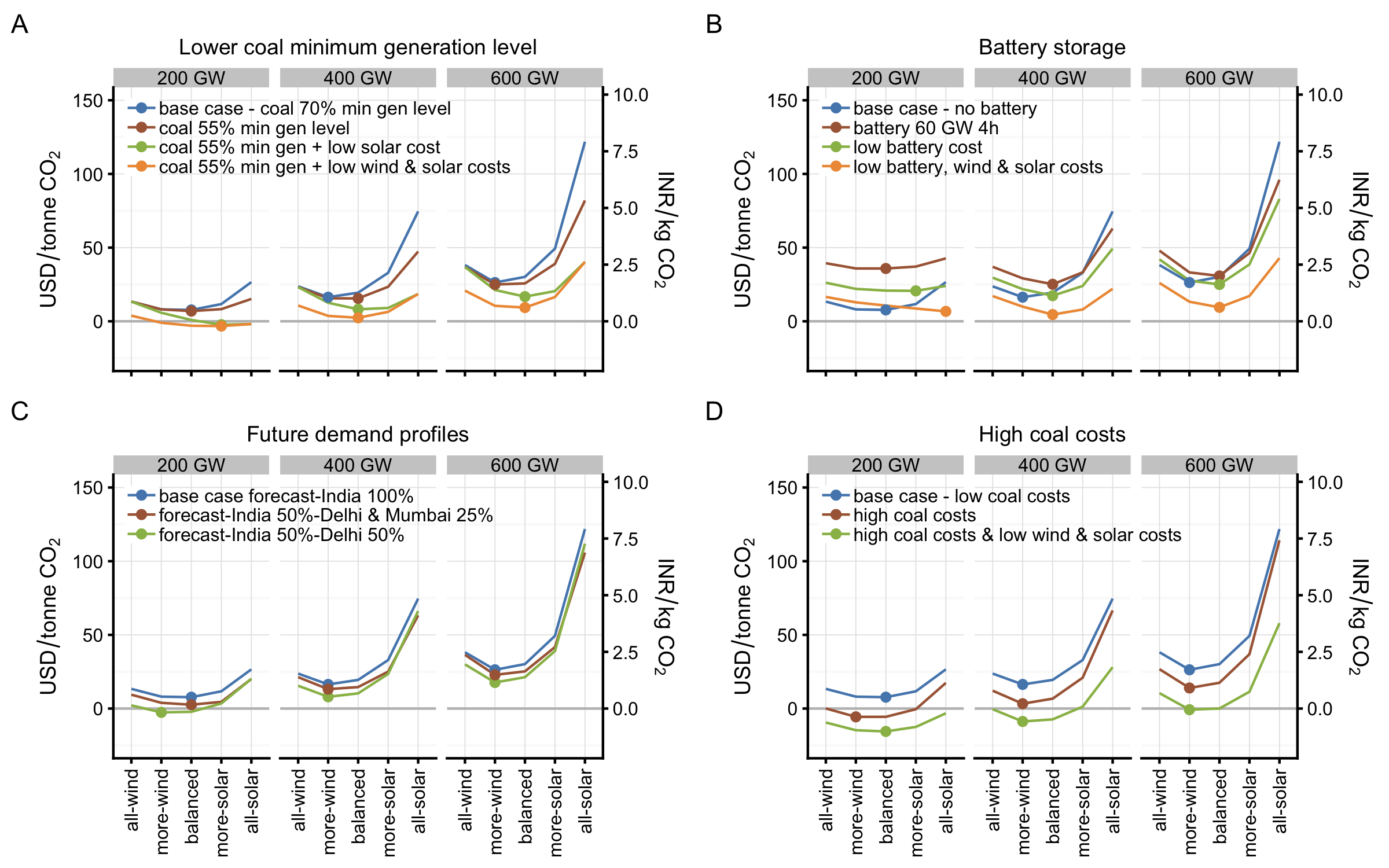
India is the third largest greenhouse gas emitter behind China and the United States. One-third of these emissions are from coal-based electricity. India’s per capita energy use is relatively low compared to global averages, suggesting a massive potential for growth in energy and emissions. Rapidly declining costs of wind, solar, and battery storage provide an unprecedented opportunity to decarbonize the country’s electricity sector, providing both global and local environmental benefits at low or negative costs. Understanding the costs of this transition and the impacts on local and global emissions under various policy and market integration scenarios can help policymakers effectively plan and operate the electricity system.
We are conducting multiple studies under this project.
In the first study, published in the Proceedings of the National Academy of Sciences, we modelled India's electricity system in 2030 with different targets and shares of wind and solar PV technologies. We developed estimates of the country's wind and solar resources using spatial analysis and weather data that, along with the country's existing generation capacity and expected future demand, formed the inputs to the renewable energy value (REV) model. For three different renewable energy targets (200GW, 400 GW, and 600 GW) and five mixes of wind and solar capacity, the REV model determined the amount of new conventional capacity required to meet demand along with the system costs and carbon emissions.

Key findings: 1) Given recent dramatic declines in wind and solar costs, we find that pursuing high renewable energy targets is cost-effective for India. We find that building significant numbers of wind and solar plants (600 GW) will reduce how often fossil fuel power plants must run, holding India’s 2030 electricity emissions at its 2018 level at costs comparable to a fossil fuel-dominated grid. 2) Because of India's particular weather and electricity demand patterns, a balanced wind-solar or a majority-wind capacity target is likely to be more cost optimal compared to India's present majority-solar capacity target. 3) Even a high renewable energy target of 600 GW does not avoid the need for firm capacity to meet India's electricity demand during certain evening hours in September to November when neither the sun is shining nor the wind is blowing. This firm capacity could come from coal power plants even if that capacity is operated infrequently. Battery storage can provide this firm capacity and with costs declining rapidly, our study shows that deploying battery storage is an essential but viable pathway for India to avoid investments in new coal power plants.

Project support: ITRI-Rosenfeld postdoctoral fellowship
To further develop our modeling capabilities, we developed the open-source GridPath modeling platform in collaboration with Blue Marble Analytics (project lead), and two India-based think tanks — the Prayas (Energy Group) and the Centre for Science, Technology, Engineering, and Policy. GridPath is a highly modular, capacity expansion and production cost modeling platform that can be used to develop electricity systems models with any spatial and temporal resolution. This project was supported by the Hewlett Foundation through the Regulatory Assistance Project (RAP). Using the GridPath platform, we are modeling India’s future electricity system with high spatial and temporal resolution that captures the variability of existing and potential wind and solar generators, multiple constraints on conventional and renewable generators, transmission, and storage, and cost trajectories for various technologies.
Project support: Development of the GridPath modeling platform was supported by the Hewlett Foundation through the Regulatory Assistance Project (RAP).
Project dates: 2019-2020
Research Area: Spatial planning of renewable energy
Research Area: Low carbon electricity systems

